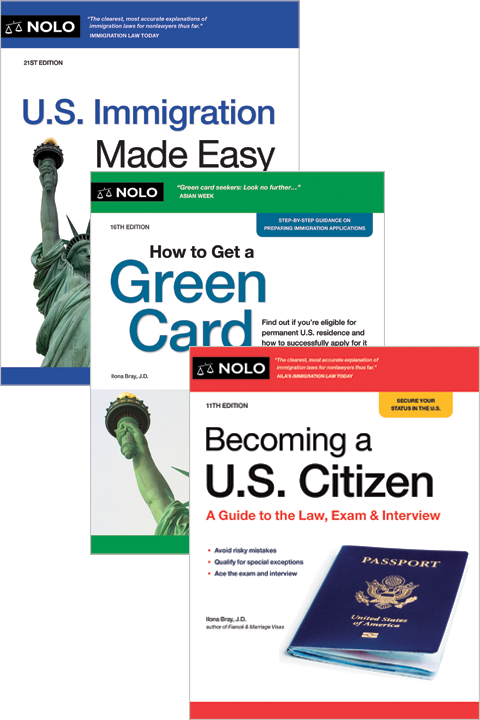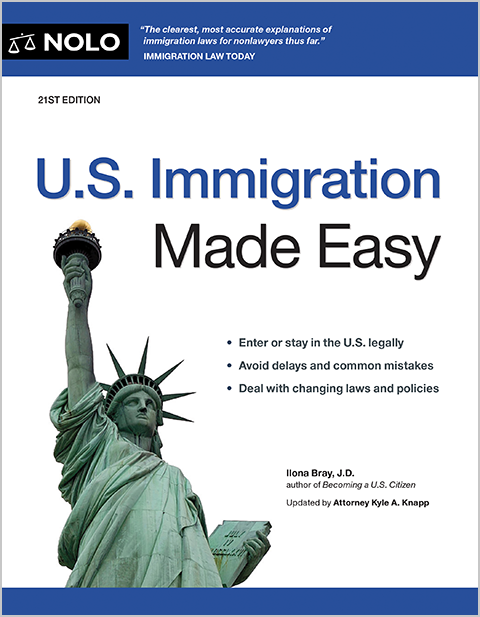No longer interested in holding a U.S. green card? Here's how to formally surrender it.
Most U.S. green card holders (lawful permanent residents or "LPRs") are concerned about an involuntary or even accidental abandonment of their LPR status, in which case they would have to leave their newfound home in the United States. But it's also possible to surrender LPR status by choice, or voluntarily. This article will look into why a person might want to give up their right to live in the United States with a green card, and how it's done. We'll cover:
- how many LPRs accidentally or unintentionally lose their right to a U.S. green card
- why and how some LPRs deliberately give up their right to a U.S. green card, and
- what happens after someone gives up LPR status.
How Some Green Card Holders Involuntarily Abandon Their Status
For most green card holders, a big concern is abandoning U.S. residence without wanting to, which can occur after an LPR has been outside the United States for more than a year and no longer has ties here. A Customs and Border Protection (CBP) officer at the port of entry (airport or land border crossing) is typically the one who determines that the LPR has abandoned U.S. permanent residency. The officer may confiscate the green card and then leave it up to an immigration judge to make a final ruling.
This is considered an "involuntary" abandonment, in that the foreign-born person might, despite having spent many months abroad, have hoped or believed that returning to the United States was a possibility in the future. Some people are confused about the actual meaning and benefit of a green card, and obtain one without realizing its significance, or the obligations that come with it. They think it will work as a long-term in-and-out travel document, not understanding that LPRs are truly expected to live in the United States.
Or maybe the foreign national had been planning to return to the U.S. earlier, but been detained by medical or other urgent issues (which can form the basis for arguing to the CBP officer or immigration judge that there was no intention to abandon residence).
In short, it can be surprisingly simple to give up U.S. residence without even meaning to. People who know they need to spend a year or more outside the U.S. and don't want to give up their U.S. residence do have an option to preserve their U.S. residence, however: they can apply to get a reentry permit before leaving.
Why Some Green Card Holders Voluntarily Give Up Their Status
People most often choose to voluntarily abandon their LPR status for tax or travel reasons. Doing so requires affirmative action on their part.
Tax Reasons for Giving Up LPR Status
The tax reason that most commonly drives people to give up LPR status relates to the obligation to file a U.S. tax return, and in most cases pay money in taxes, as a U.S. resident. By officially surrendering the green card, it might be possible to terminate U.S. tax obligations. To be sure that this is a worthwhile strategy, the LPR would be wise to consult a qualified tax adviser, such as a Certified Public Accountant (CPA) or tax attorney.
Travel-Related Reasons for Giving Up LPR Status
The most common travel reason for LPRs to surrender a green card is that they have spent more than a year abroad deliberately, and have no intention of resuming permanent residency in the United States, though they might like to visit the U.S. at times for holiday or business.
Again, a green card is solely meant for people who make the United States a permanent home or residence. It's not for those who simply want to visit the U.S. once or twice a year and take advantage of the shorter or faster line at the airport.
If someone's primary and permanent residence is in another country, then a visitor visa (B-2), not a green card, is the appropriate means by which to enter the United States. After learning this, the person might realize that surrendering the green card makes more sense than trying to convince the U.S. border officers to let them in after every long absence.
Procedures for Giving Up U.S. Permanent Residence
The procedure to surrender a green card/LPR status is fairly straightforward. The LPR simply needs to fill out and submit USCIS Form I-407, Record of Abandonment of Lawful Permanent Resident Status. No filing fee is required.
The I-407 is a four-page document that requires basic biographical information, date of most recent departure from the United States, and other processing-related information. Along with the form, you will need to send in your green card, or provide a reason why you cannot (for example, that it has been lost, stolen, or destroyed).
Make a copy of the completed I-407 and green card, for future reference. Then send the whole package to the address listed on the I-407 page of the USCIS website.
In rare cases, if you need immediate proof that you have abandoned LPR status, the local U.S. embassy or consulate in your country might allow you come in person to surrender your green card and submit the form.
Assuming you have sent the I-407 package in by mail, expect a turnaround time for USCIS's response of at least two months. (You can check the latest processing times for Form I-407 on the USCIS website.)
If your purpose in giving up LPR status is to avoid U.S. taxation, also talk with a U.S. tax adviser about appropriate procedures to show the IRS that you are no longer a permanent resident, also called a "resident alien." You will likely need to include a copy of your I-407 application with your next U.S. income tax return. For more information, see IRS Publication 519 (2024), U.S. Tax Guide for Aliens.
What You're Giving Up
Once an LPR has completed and submitted the I-407 and surrendered the green card, this act is irrevocable, meaning it cannot be undone. This will impact your rights to travel to the United States, obtain public benefits or Social Security here, sponsor family members to immigrate, and more.
If you and your immediate family truly plan to settle elsewhere, perhaps the list of what you're giving up is not significant to you. But at the very least, you might hope to make future trips to the United States. Keep in mind that you would then need a visa to do so, or might be able to travel without a visa under the Visa Waiver Program (which applies only to citizens of certain countries). If planning to travel on a standard visitor visa, note that you will not be authorized to work in the U.S., and your trips will probably be limited to six months or less. For purposes of entering the United States, you will need to carry the USCIS response to your I-407 with you, to explain that you are a former LPR.
And it probably goes without saying that any time that you accrued toward naturalized U.S. citizenship (which usually requires U.S. residence of five years) will be forfeited.
Can You Ever Get Another U.S. Green Card?
Surrendering a U.S. green card does not preclude you from making another application for LPR status in the future. But you would need to start over from square one. Some LPRs might have originally gone through a decade-long waiting period to get the green card. And their eligibility could have changed in the interim, for example if they obtained status as the unmarried child of a U.S. citizen, but have since grown up and married. So, you'd need to reevaluate your eligibility, possibly with the help of a lawyer.
Getting Legal Help
Completing Form I-407 and surrendering a green card is not something to be done hastily. Consulting with an immigration attorney and a tax adviser, if appropriate, is both a good idea and strongly recommended before making such an important decision with long-lasting or permanent consequences.

